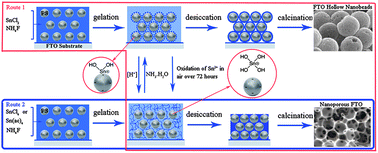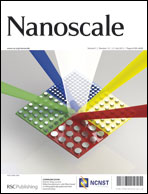We report the synthesis, characterization and applications in Li-ion batteries of a set of 3-dimensional (3-D) nanostructured conducting oxides including fluorinated tin oxide (FTO) and aluminum zinc oxide (AZO). The morphology of these 3-D conducting oxide nanoarchitectures can be directed towards either mono-dispersed hollow nanobead matrix or mono-dispersed sponge-like nanoporous matrix by controlling the surface charge of the templating polystyrene (PS) nanobeads, the steric hindrance and hydrolysis rates of the precursors, pH of the solvents etc. during the evaporative co-assembly of the PS beads. These 3-D nanostructured conducting oxide matrices possess high surface area (over 100 m2 g−1) and accessible interconnected pores extending in all three spatial dimensions. By optimizing the temperature profile during calcination, we can obtain large area (of a few cm2) and crack-free nanoarchitectured films with thickness over 60 μm. As such, the sheet resistance of these nanoarchitectured films on FTO glass can reach below 20 Ω per square. The nanoarchitectured FTO electrodes were used as anodes in Li-ion batteries, and they showed an enhanced cycling performance and stability over pure SnO2.

You have access to this article
 Please wait while we load your content...
Something went wrong. Try again?
Please wait while we load your content...
Something went wrong. Try again?


 Please wait while we load your content...
Please wait while we load your content...